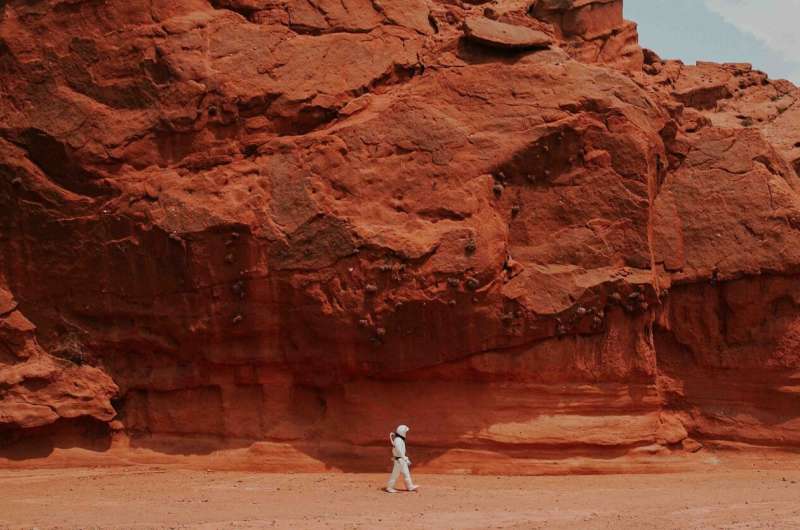
Copernical Team
Lockheed Martin to supply 36 Small Satellites to advance SDA satcom network
 The Space Development Agency (SDA) awarded Lockheed Martin (NYSE: LMT) a firm-fixed price agreement valued at approximately $816 million to build 36 Tranche 2 Transport Layer (T2TL) Beta satellites. T2TL is part of an overarching plan to strengthen deterrence with more resilient space architectures for beyond line-of-sight (BLOS) targeting, data transport, and advanced missile detection and trac
The Space Development Agency (SDA) awarded Lockheed Martin (NYSE: LMT) a firm-fixed price agreement valued at approximately $816 million to build 36 Tranche 2 Transport Layer (T2TL) Beta satellites. T2TL is part of an overarching plan to strengthen deterrence with more resilient space architectures for beyond line-of-sight (BLOS) targeting, data transport, and advanced missile detection and trac In the service of planetary science, astrophysics and heliophysics
 New Horizons is healthy, in active operations mode and speeding across the Kuiper Belt. Just as it did while hibernating from June 2022 through February 2023, the spacecraft is collecting round-the-clock data on our Sun's cocoon in the galaxy called the heliosphere.
I am even more excited about an intense period of diverse science observations that is stretching across August and September
New Horizons is healthy, in active operations mode and speeding across the Kuiper Belt. Just as it did while hibernating from June 2022 through February 2023, the spacecraft is collecting round-the-clock data on our Sun's cocoon in the galaxy called the heliosphere.
I am even more excited about an intense period of diverse science observations that is stretching across August and September How a cup of water can unlock the secrets of our Universe
 Researchers from Queen Mary University of London have made a discovery that could change our understanding of the universe. In their study published in Science Advances, they reveal, for the first time, that there is a range in which fundamental constants can vary, allowing for the viscosity needed for life processes to occur within and between living cells. This is an important piece of the puz
Researchers from Queen Mary University of London have made a discovery that could change our understanding of the universe. In their study published in Science Advances, they reveal, for the first time, that there is a range in which fundamental constants can vary, allowing for the viscosity needed for life processes to occur within and between living cells. This is an important piece of the puz Accretion disks: How big are they really?
 Using the Gemini North telescope, one half of the International Gemini Observatory, operated by NSF's NOIRLab, astronomers have detected for the first time evidence of the presence of an accretion disk within the active galactic nucleus of galaxy III Zw 002. Using two rare and peculiar near-infrared emission lines, these observations place firm limits on the size of the galaxy's accretion disk a
Using the Gemini North telescope, one half of the International Gemini Observatory, operated by NSF's NOIRLab, astronomers have detected for the first time evidence of the presence of an accretion disk within the active galactic nucleus of galaxy III Zw 002. Using two rare and peculiar near-infrared emission lines, these observations place firm limits on the size of the galaxy's accretion disk a After Moon landing, India eyes the Sun
 Days after becoming the first nation to land a craft near the Moon's largely unexplored south pole, India's space agency said on Monday it will launch a satellite to survey the Sun.
"The launch of Aditya-L1, the first space-based Indian observatory to study the Sun, is scheduled for September 2," the Indian Space Research Organisation (ISRO) said on X, formerly known as Twitter.
Aditya,
Days after becoming the first nation to land a craft near the Moon's largely unexplored south pole, India's space agency said on Monday it will launch a satellite to survey the Sun.
"The launch of Aditya-L1, the first space-based Indian observatory to study the Sun, is scheduled for September 2," the Indian Space Research Organisation (ISRO) said on X, formerly known as Twitter.
Aditya, Huginn begins
 Image:
Andreas Mogensen enters the Space Station
Image:
Andreas Mogensen enters the Space Station Japan postpones 'Moon Sniper' launch for third time
 Japan's space agency on Monday postponed for the third time the launch of its "Moon Sniper" lunar mission due to strong winds just half an hour before launch.
The Japan Aerospace Exploration Agency (JAXA) gave no new date for the launch, which comes after India successfully landed a probe on the Moon last week.
The rocket, set for launch from the southern island of Tanegashima, will also
Japan's space agency on Monday postponed for the third time the launch of its "Moon Sniper" lunar mission due to strong winds just half an hour before launch.
The Japan Aerospace Exploration Agency (JAXA) gave no new date for the launch, which comes after India successfully landed a probe on the Moon last week.
The rocket, set for launch from the southern island of Tanegashima, will also Japan postpones 'Moon Sniper' liftoff for third time

Japan's space agency on Monday postponed for the third time the launch of its "Moon Sniper" lunar mission due to poor weather.
The H2-A rocket due to blast off from the southern island of Tanegashima was also carrying a research satellite developed with NASA and the European Space Agency.
The Japan Aerospace Exploration Agency (JAXA) gave no new date for the start of the mission, which comes after India successfully landed a probe on the Moon last week.
MHI Launch Services, the rocket co-developer, said on the social media platform X that the mission was called off "because it was confirmed that the upper wind does not satisfy the constraints at launch".
Last week India landed a craft near the Moon's south pole, a historic triumph for the world's most populous nation and its low-cost space program.
Previously, only the United States, Russia and China had managed to put a spacecraft on the lunar surface, and none on the south pole.
India's success came days after a Russian probe crashed in the same region, and four years after a previous Indian attempt failed at the last moment.
India lands a spacecraft near the moon's south pole, a first for the world as it joins elite club

Simulations suggest only 22 people are required to start a colony on Mars

A team of computational social scientists at George Mason University has found via simulations that 22 people is the minimum number needed to start a human colony on Mars. The group has posted a paper describing their simulation on the arXiv preprint server.
As humans around the globe ponder the possibility of one day sending people to Mars, and then at some later date, establishing a colony, scientists are exploring ways to overcome the hurdles standing in the way of achieving such goals. One factor that needs to be addressed, according to the team, is determining how many people could sustain a Mars colony, and what types of people are required.
To find possible answers, the team created a model simulating a Mars colony, focused specifically on how many people are required to create a viable colony as well as the characteristics that would most likely contribute to the success of such a colony. To that end, they used data from past endeavors, such as questionnaires filled out by groups aboard the International Space Station or those living in close quarters in the Arctic for months at a time.
